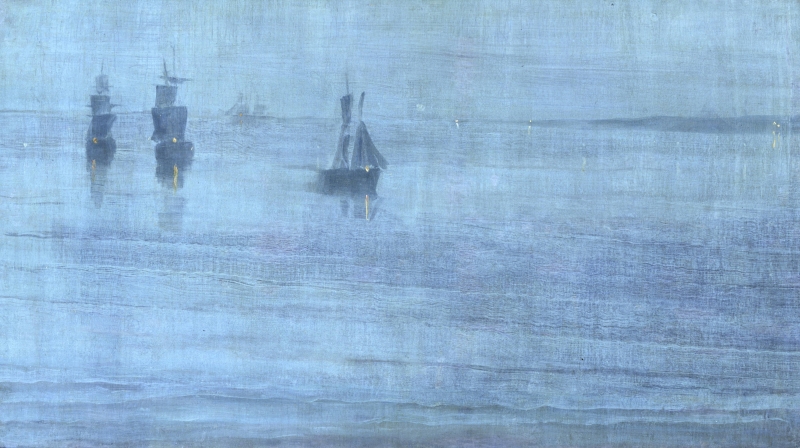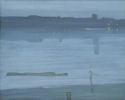Nocturne: The Solent probably dates from 1871 or 1872.
The painting was dated 1866 by earlier writers, including Andrew McLaren Young (1913-1975), and thought to date from Whistler's trip to Valparaiso. 1 It was therefore assumed to predate the Nocturnes of the 1870s. 2 However, Robert H. Getscher has pointed out that several factors point to a later date, and to a different site, probably the Solent, which is the waterway between the Isle of Wight and Southampton. 3
Stylistically a date of 1871/1872 is indicated. 4 The Nocturne shows similarities in colour and handling to Nocturne: Blue and Silver - Chelsea [YMSM 103]. This still means that it is among the earliest as well as one of the most atmospheric Nocturnes.
Notes:
1: YMSM 1980 [more] (cat. no. 71).
2: Exhibition catalogue London and New York 1960 [more] (cat. no. 16), Exhibition catalogue London, Paris & Washington, DC, 1994 [more] (cat. no. 43), and Exhibition catalogue Atlanta, After Whistler, 2003 [more] (cat. no. 3) discuss this work as dating from 1866 and presaging the Nocturnes of the 1870s.
3: Getscher 2004 [more] , pp. 13-14.
4: It was dated 'circa 1872-74' in the Exhibition catalogue New York 1947 [more] (cat. no. 4).
Last updated: 2nd December 2020 by Margaret







